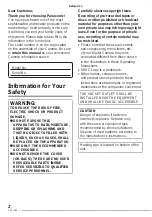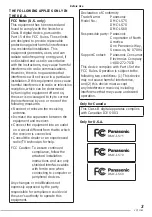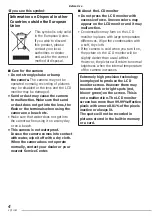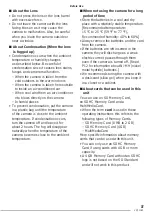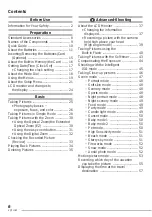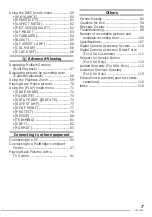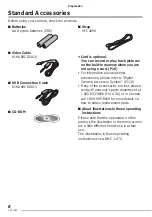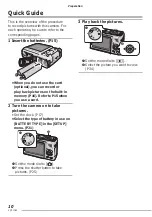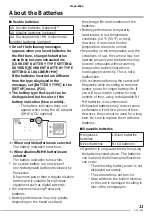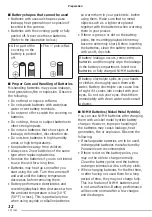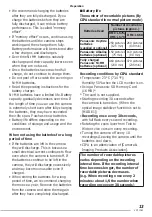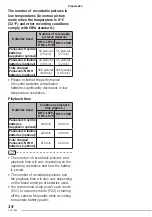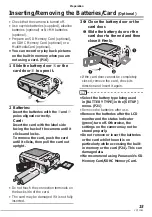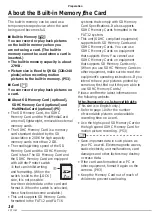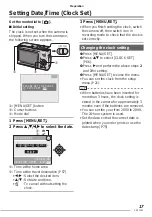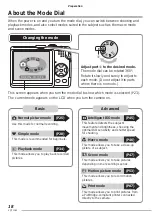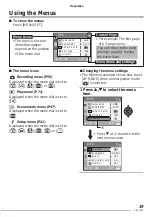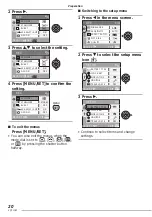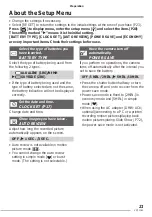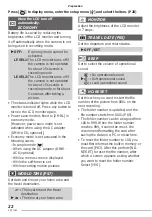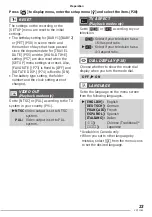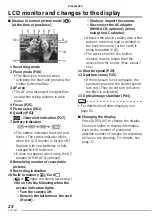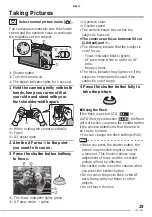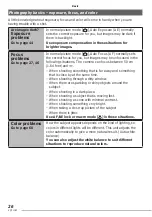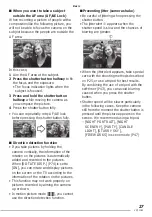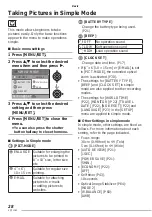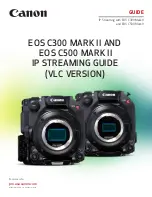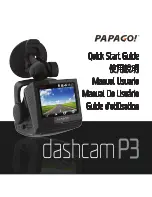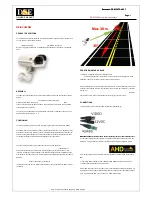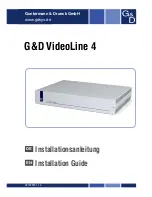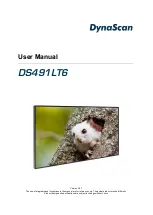
13
VQT1C63
Preparation
• We recommend charging the batteries
after they are fully discharged. If you
charge the batteries before they are
fully discharged, it can reduce battery
performance. This is called “memory
effect”.
• If “memory effect” occurs, continue using
the batteries until the camera stops
working and then charge them fully.
Battery performance will be restored after
a few charges and discharges.
• Over time Ni-MH batteries naturally
discharge and their capacity lowers even
when they are not used.
• Once the batteries have reached full
charge, do not continue to charge them.
• Do not peel off or scratch the covering on
Ni-MH batteries.
• Read the operating instructions for the
battery charger.
Ni-MH batteries have a limited life. Battery
capacity gradually decreases over time. If
the length of time you can use the camera
is extremely short even after fully charging
the batteries, they may have exceeded
their life span. Purchase new batteries.
• Battery life differs depending on the
conditions of storage and usage and the
environment.
When not using the batteries for a long
period of time
• If the batteries are left in the camera
they will discharge. This is because a
small electrical current continues to fl ow
even when the camera is turned off. If
the batteries continue to be left in the
camera, they will discharge excessively
and may become unusable even if
charged.
• When storing the batteries for a long
period of time, we recommend charging
them once a year. Remove the batteries
from the camera and store them again
after they have completely discharged.
■
Battery life
The number of recordable pictures (By
CIPA standard in normal picture mode)
Batteries Used
Number of recordable
pictures (Approx.)
DMC-LS75/
DMC-LS70 DMC-LS60
Panasonic Oxyride
batteries
(supplied or optional)
250 pictures
(125 min)
260 pictures
(130 min)
Panasonic Alkaline
batteries (optional)
150 pictures
(75 min)
160 pictures
(80 min)
Fully charged
Panasonic Ni-MH
batteries (optional)
460 pictures
(230 min)
470 pictures
(235 min)
Recording conditions by CIPA standard
• Temperature: 23 °C (73.4 °F)/
Humidity: 50% when the LCD monitor is on.
• Using a Panasonic SD Memory Card
(16 MB)*
* The card is not supplied.
• Starting recording 30 seconds after
the camera is turned on. (When the
optical image stabilizer function is set to
[MODE1])
•
Recording once every 30 seconds,
with full fl ash every second recording.
• Rotating the zoom lever from Tele to
Wide or vice versa in every recording.
• Turning the camera off every 10
recordings./Leaving the camera until the
batteries cool down.
• CIPA is an abbreviation of [Camera &
Imaging Products Association].
The number of recordable pictures
varies depending on the recording
interval time. If the recording interval
time becomes longer, the number of
recordable pictures decreases.
(e.g. When recording once every 2
minutes: about 1/4 the number when
recording once every 30 seconds)


